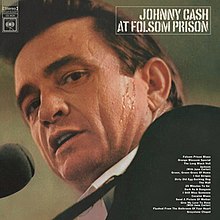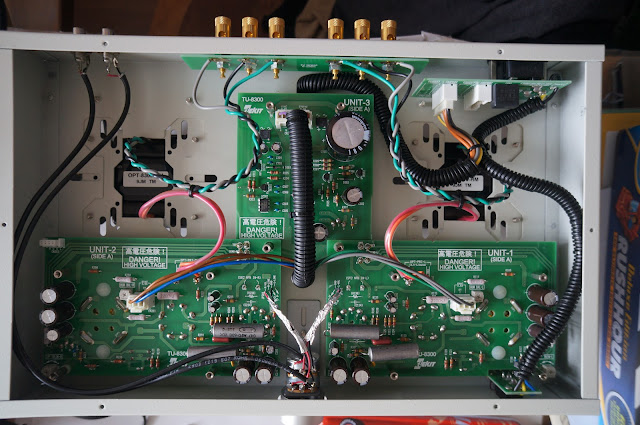
Click to enlarge. Micromega MyDAC next to Elekit preamp. Blue Ray player beneath Akitika amp.
New York Diary (20-15): Streaming Classical in Time of Corona
Guide to Classical Magazines
My small System for Streaming.
Naxos Music Library, II
Previous Article on the NML via NYPL
For the longest time, this blog has covered classical music. But for almost a month, since I set up my system in the living room, I haven't updated the music column. Recently, having received a few surprising, and encouraging, feedback (some on my YouTube Classical Basic Repertoire), I felt I have to start streaming again so as to find more current offerings to recommend. As I now spend all of my waking hours in the LR, first thing is to set up a small system there:
DAC: Micromega MyDAC (Kimber KCAG)
Preamp: Elekit TU-8500 (old Audio Note AN-V)
Amp: Akitika GT-102 (Acrotec 6N-1010)
Loudspeakers: Audiomaster LS3/5A (15 ohm)
Stands: el-cheapo generic stand used without spikes
Blue Ray Player: Sony S-5000ES (Audio Out; Canare 2T2S)
Turntable: Audio-Technica AT-PL120/Denon DL-301ii
Basically, this is moving out part of my System III (sidebar) into the LR. As is my wont, it starts simple but is likely to get more complicated as I go along. A note on the BR player; as denoted by the ES suffix, this was Sony's well reviewed flagship BRP (here), one I acquired when it was closed out but it has seen little use in the last decade. Sony players are known for their sonic excellence (even my el-cheapo BDP-190, which I wrote about preferring it to Weiss)
Before I moved on to Streaming, I played a few CDs to ensure the sound was of good quality. Having confirmed that, I used (via wifi) an old loaner Dell laptop nominally running Windows 10 (originally a Windows 7 unit). My favorite USB cable was not long enough and I had to compromise and use a generic USB extension cable to reach my seat. Even then, despite occasional crackles, sound was good enough, even better than it was in the audio room. Regrettably, I cannot add a sub now, because it is being used in the big system behind. But the sound was fuller and surprisingly bassier than before in the audio room. I think this is as much due to use of the wood based stands (the ones in the audio room are much higher quality Sonus faber stands with spikes) as a tubed preamp.
As before, I accessed the NML through the NYPL. Since the modem is in the LR, the connection is now better than in the audio room. The only times I get disconnected is when I concurrently visit websites with a lot of ads and videos (like news sites), no doubt due to the aged computer's lack of capacity.
How to Start? Faced with over 150K discs, one realizes too much is too much. For me, I am only interested in relatively new recordings. And for every great composer, there are a hundred lesser ones that only specialists may be interested in. So, browsing is not as easy as pulling items off the shelf in the Performing Arts Library. It is much easier to find specific discs than to browse. For the beginner, it'd be even more daunting. Therefore, it is much easier to rely more on classical music websites (including this blog) for some recommendations. Before we visit them, a few pointers.
Online CD Reviews There is a lot out there. Even more than audiophiles, classical music listeners in a vaster universe listen in different ways, and have different preferences:
- The same recording (especially the daring ones) can polarize opinions. If you are curious about a certain recording, it is good to read more than one review to get the gist. Take one of the albums I listened to, the Sibelius 2nd conducted by Rouvali, as an example: it's highly praised here but severely panned here. Me? I think it is somewhere in the middle and I can understand both views, but I stop short of a general recommendation. In this blog, when I decide I like a recording, I recommend it and include a link that I agree with, but that doesn't mean sometimes there won't be a dissenting opinion.
- Critics all have bias, even serious ones, and can be nationalistic. Just like audiophiles, some may prefer a big fat sound, others a more pacey delivery. Some like their baroque music to be played in historically informed fashion (like lack of vibratos), others still cling on to older, more romantic ways of playing. American Critics tend to think US orchestra are the most virtuosic (I prefer European Orchestras, especially the ones formerly in East Germany, for their subtlety and refinement). Even more than that, UK critics are widely alleged (especially by US critics) to easily pander to their own musicians (I think that is at least a half truth).
- Amateur User Reviews That includes me. Many professional critics read music, whereas this is not the case for amateurs. However, music is for all, and even a musician's feeling and opinion may not be right for you! Amazon reviews can also be interesting, and some commentators are quite experienced.
- Vendors Many vendors include quotes of reviews, and they can be useful. Prestomusic is a large UK vendor and its homepage has some useful info on new releases etc. On many albums, there are capsular reviews from subscription UK magazines that are useful and otherwise not available. The US vendor ArchivMusic also frequently have such reviews from both UK and US magazines (but less so now).
- Forums and Composer Sites There are all kinds of sites devoted to reviews, discography of artists and composers. Many of these have informative posts on a certain topic.
Classical Magazines Once you know what you want an opinion on, it is easy, just google and many reviews will come up. But what if you just want to browse, read a webzine like you would a print magazine? There are of course some very good ones that one has to subscribe to, but there are also some free internet sites. I'll start with my favorite (even if I don't read it as a zine, only selected reviews).
Free Webzines
MusicWeb-International This UK site is the most comprehensive free webzine. The reviews, though not without a bit of pro-UK bias, are mostly fair and sometimes more than one reviewer will review the same disc and give different opinions. There is a lot to this magazine, including surveys of composers like Mahler. A very useful feature is the Monthly Indexes, where the best albums of the year are listed. I just perused this and have listened to several album;, some I like and they end up in my music column, some not so enthusiastic about. And then there are good performances that I listened to (like Edward Gardner's Schubert cycle, or Lepauw's mammoth complete Bach Well-tempered Clavier) and liked but decided they are only for more advanced listeners. It will likely take one years to go through what they recommend over the years!
Classics Today This US site is about 2/3 free. It has good reviewers, the straightest shooting of which is David Hurwitz, who often trashes more wayward readings. If he says something is good, it usually is. If he trashes it, you might find it praised by others and still like it. the other writers are good too (you might recognize Robert Levine as also a Stereophile writer).
All Music Guide AMG used to issue heavy and comprehensive books (I still have two, one on classical, one on rock) but is now web only. It is free but coverage is not as extensive as some others. I find the reviewers very reliable though.
Classical-Music This the official UK BBC Classical Music Magazine website, which only lists a few Monthly Choices, but they can be useful. This is a pretty good magazine that I used to borrow from the library in HK.
Subscription Magazines
The best magazine in terms of comprehensive coverage is UK's Gramophone. This magazine has the longest history, dating to before the war, and there are some very old reviewers around. This is valuable for their historical insights and recollections. This magazine though is a little more patronizing to UK institutions, understandably given such a tradition. I used to read this religiously in HK. Too bad that the Queens Library system does not subscribe to a single classical magazine (though they have jazz' Downbeat). The website has some free articles that are useful, like the 50 Best Recordings series on the right, useful for beginners.
The best of the US magazine is the ultra-conservative and very good American Record Guide. It has almost no pictures (no pic of album cover, a shortcoming) and few ads. I like it a lot more than the other one, Fanfare.
Postscript: I am currently addicted to streaming, and shall soon rejuvenate the Music Column. Also, this little system is going to get further development. Maybe it is time to match the BRP to a generic DVD player for use as transport (remember our Russian friend?). Maybe a bit of phonoamp shootout also. Maybe adding back the sub. Too many maybe's....
Basic Repertoire
My recommended Astor Piazolla album in the Music Sidebar has one of his most popular tunes, Oblivion. But here is Piazolla's most famous tune, Adios Nonino, played by the great man himself. Incomparable.







:format(jpeg):mode_rgb():quality(40)/discogs-images/R-8388806-1460655584-5381.jpeg.jpg)



















